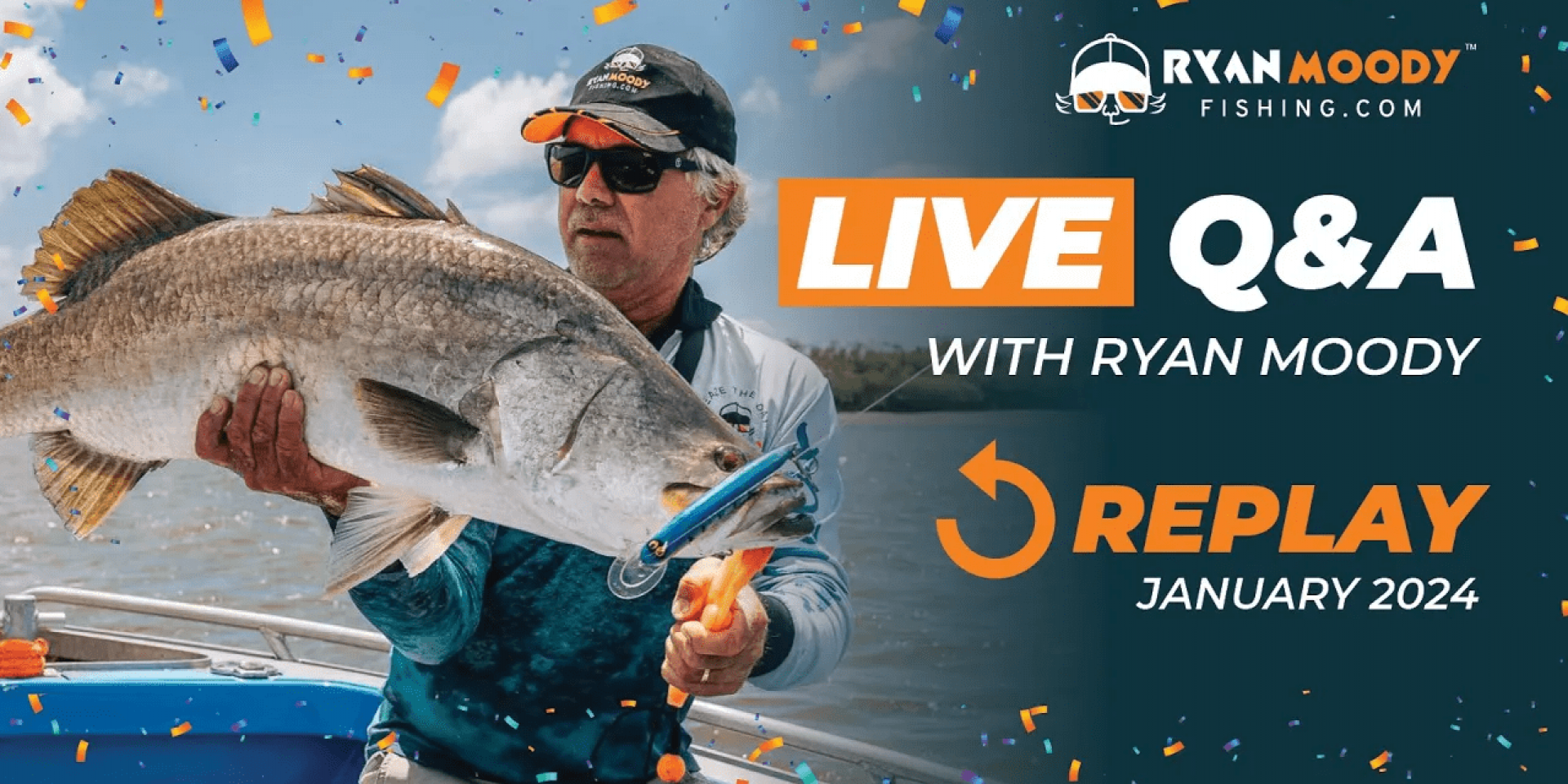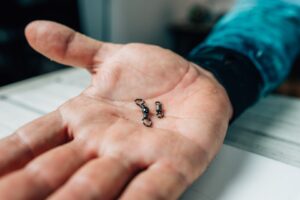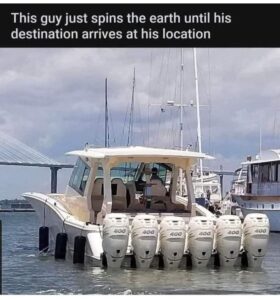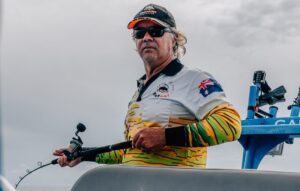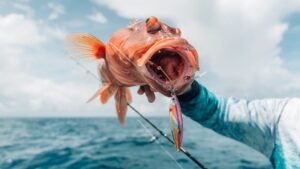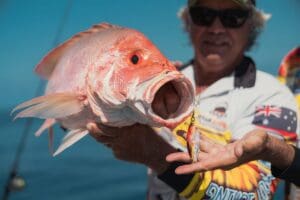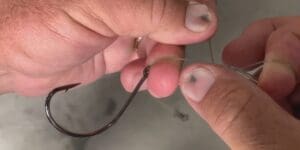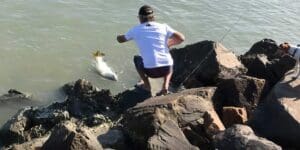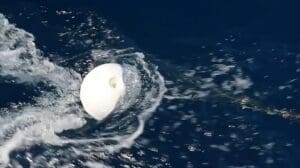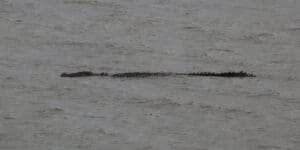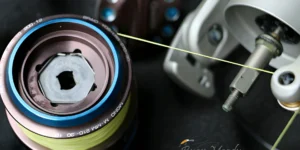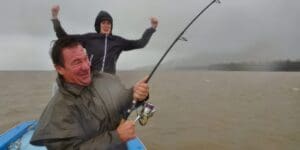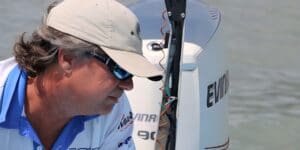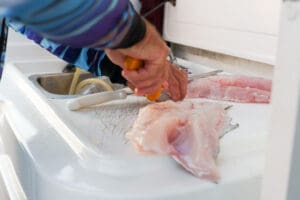On the 31st January Ryan gave a two hour Q and A session live on Facebook, filled with fishing tips and techniques.
To save you time we have summarised some of Ryan’s takeaways from this live session. Whether you’re a beginner looking to enhance your skills or an experienced angler seeking additional wisdom, these takeaways cover various aspects of fishing, from tactics to gear recommendations.
We’ve also included the video replay with timestamps at the bottom of this blog for those that may be interested in the 40+ topics covered.
12 key fishing tips and techniques
Q. Mackerel in Moreton Bay – Lures, Bait or Plastics?
A. When it comes to fishing tips and techniques to catch fast fish like Spaniards, several tactics work well.
First off, try sinking metal slices in groups of Yakkas or Pilchards. Avoid areas where small white birds are diving for tiny baitfish; you’ll likely only catch tuna there. Instead, focus on bigger groups of baitfish, dropping big metal slices around the edges of these baitfish groups and pulling them up quickly. Metal slices are a reliable choice, especially for catching small mackerel.
Another trick is using wog heads with gang hooks. This trick is especially popular when trolling.
High-speed lures without a bib have also become popular. When searching for bait or driving around, try using a couple of these lures at speeds around seven to eight knots. This approach works well for catching various fast fish.
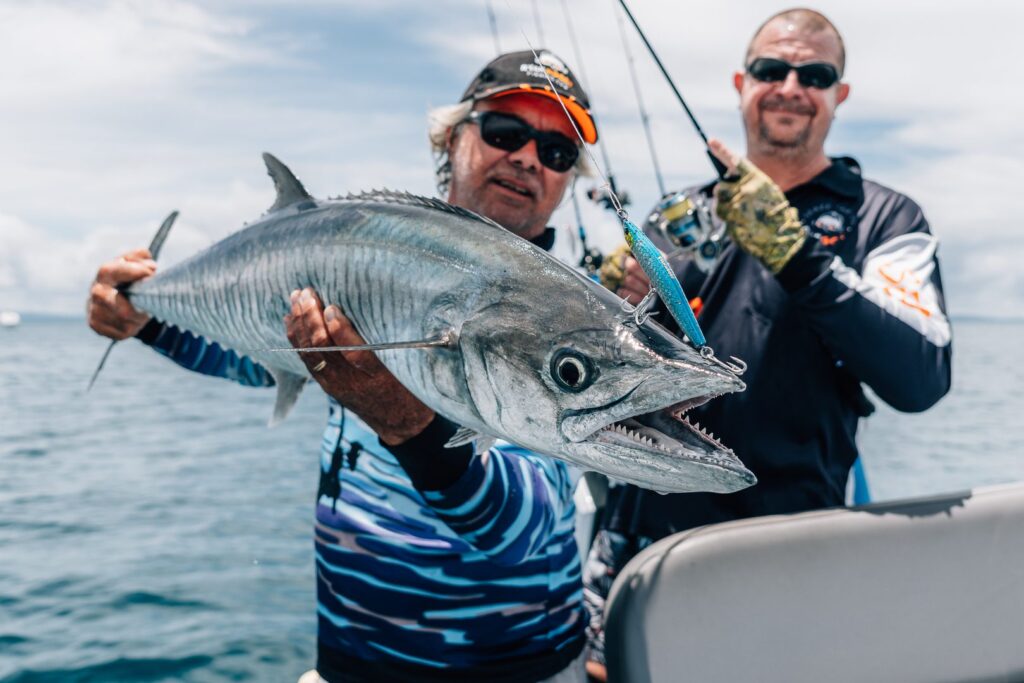
Q. Updates on bag size limits for Nannygai!
A. We’ve been eagerly waiting for Queensland Fisheries to let us know what’s happening with Large-Mouth Nannygai. We do know they’re on the table alongside Spaniards. About six months ago, some information leaked on Facebook. It was shared by the commercial sector or commercial fishermen. They expected the bag limits to be in line with their 2021 recommendations, suggesting a significant drop in the total allowable catch from 237 tons to just 12 tonnes. This could mean only one Nannygai per boat, not even one per person. I don’t think it’ll be that extreme, as it could impact charter operators on the East Coast, taking away key catches like Spaniards and Nannygai.
We’re hoping Fisheries will provide an update soon so we can figure out if we need to stand up and fight for our interests or if the recommendations are reasonable. Personally, a reduction to three big Nannies per person seems fair, letting us catch other fish responsibly. But if the limits tighten to one per boat or one per person, people might stay longer in deep waters, causing unintended problems like increased mortality due to barotrauma, going against sustainability. As we eagerly await clarity, we hope for a compromise that ensures conservation without harming those who depend on these fisheries. We look forward to a timely update from Fisheries, keeping our fingers crossed for a resolution that balances the environment and industry needs.
My go to location for catching large mouth nannygai are Wonky Holes. Check out our Wonky Holes course for all the fishing tips and techniques to get onto some of these hard fighting delicious fish.
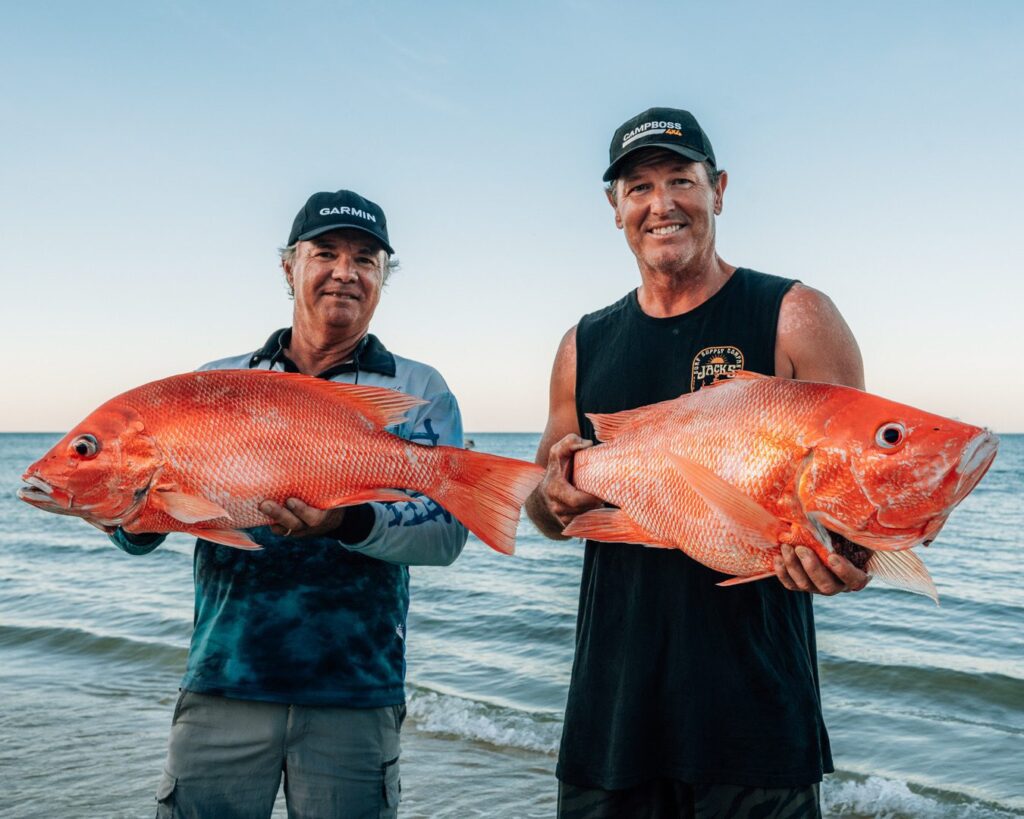
3. What is the best depth to find new spots in open water?
A. It depends on the fish you’re aiming for. When searching for fingermark or exploring open water, I usually focus on areas close to the shore, around 25 meters deep. If I’m going after reds and trout away from structures, we go into waters that are 30 to 40 meters deep or more.
There’s all sorts of open ground in the way of Coral Isolates and Ferns and Sponge Beds and all that sort of stuff Wonky Holes. All depth ranges. It’s out there everywhere. So it just comes down to the species you’re chasing and how far out you want to go.
The most important skill you can learn regarding finding new spots is mastery of your fish finder.
Finding fish on your electronics is a big part of fishing success no matter what technique you use.
20,000 + anglers have improved their fishing simply by doing our Sounder Skills 1 course – currently reduced to $19.99
4. What is the best technique to catch Marlin off the South Coast?
A. Fishing tips and techniques to catch Marlin pretty much apply everywhere. Find where the fish are hanging out by looking for bait schools on your sounder or looking for larger birds like gannets. Once you locate these bait schools, troll lures criss crossing the area with long figure 8 patterns. Marlin are curious, and often rise to a moving vessel and the prop wash. Alternatively use a flasher teaser to entice them up. If all else fails, mark where you saw the fish and keep trying in that area. It’s also a good idea to follow the bait schools as they move around the area using your GPS and side imaging to track these bait schools effectively. This technique is explained further in the offshore fishing section of our Locating Livies course chasing Yakkas and Pilchards.5. What are the best lures to catch Barra in dams with lily pads?
A. Lily pads can be a nuisance so lures that track over the top of them when needed are best. Surface frogs for instance have hooks facing upwards through the back so are less likely to get hooked up. They can be “hopped” with the rod tip over the pads. Weedless plastics hide the hook within the lure and can be used when lily pads are not so dense. In the early days of impoundments, such as in Ross River, targeting fish around lily pads became a prominent strategy, especially as these water bodies were initially stocked. The key lies in working areas with lily pads strategically, focusing on edges. And while many anglers may be familiar with fishing amidst lily pads or timber in dams, there exists a less-explored territory that often yields exciting results. These overlooked areas are less pressured and are covered in the impoundment module of our course Barra Basics.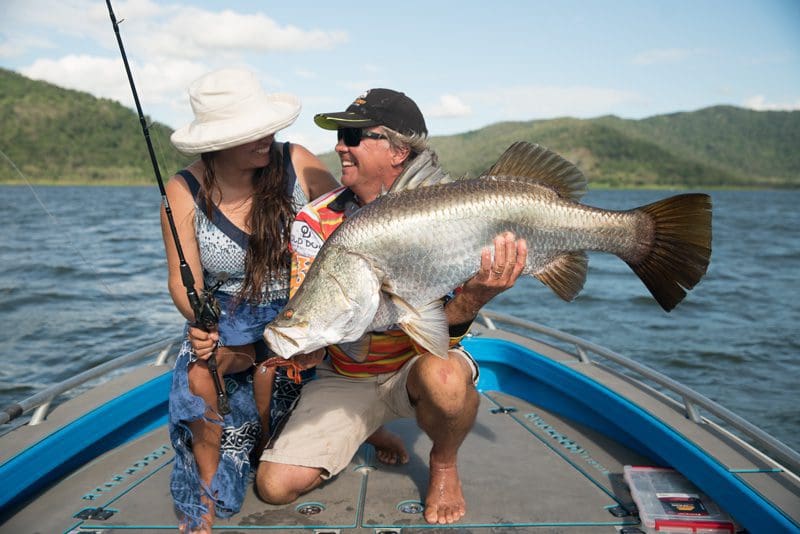
6. What are your go to surface lures for Barramundi?
A. So, the surface frogs are very good. There’s a variety of them out on the market, and Reidys’ little stickbaits, the J-Walker, also work really well. They closely resemble a Popeye Mullet. It’s exceptional, and we’ve caught a lot of fish on it. Surface fishing for Barras, of course, there’s a variety of Poppers out there that will work too. But in saying all this, if you want to chase them on the surface, you naturally, for the most part, have to be in shallows, shallow water. Understanding their habits will help you catch more fish.7. How far do Wonky Holes come down the East Coast?
A. We’ve got something called coastal sediment wedge reaching out to the reef and they occur in that. While a few have been found near Noosa, like sinkholes, they’re not common, and we don’t actively talk about them there because there aren’t many. We want to avoid making people think we’re tricking them or sending them on a hard-to-find quest. Generally, we say Wonky Holes are mostly found north of Fraser Island, although a few have been found to the south. Once, we found 15 in one spot, and they looked like pimples, probably because of water pressure.8. Which lure weight is best for jigging in 50+ meter?
A. I’ll definitely go with 100 grams. I know some people say, you know, 50 meters, 60 meters. They suggest using a 400-gram jig. Well, it can also depend on what you’re targeting. The larger jigs are great for species like Dogtooth, larger Pelagics, and so on. Honestly, I would use these jigs as deep as possible in relation to the amount of current and reaching the bottom. So, even though some people say, “Don’t use an 80-gram jig in water deeper than 30 meters,” that’s rubbish. Use them in 50, 60 if you can still reach the bottom. If not, just go up in weights. There’s no real set rule as long as you can reach the bottom. And, as I mentioned, it depends on what you’re targeting. So, longer and bigger jigs are better for species like Dogtooth. However, if you’re targeting demersal fish like reds, etc., keep those jigs around 80 to 100 grams, or even a little bit larger if necessary.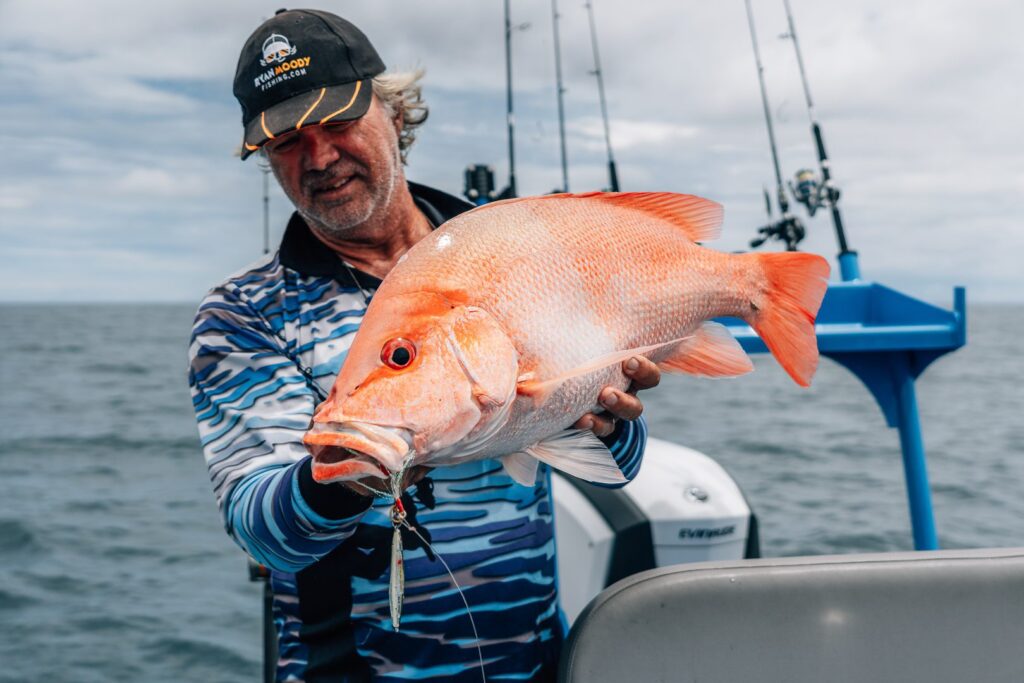
9. Does flooding affect Barra bites?
A. That depends, just like it does on any river. It comes down to the amount of water that flows. Fresh can send them into a spin for a while, they will come back in underneath the fresh. Of course, they can tolerate it a lot more than other fish. But it throws them into a bit of a spin to start with. I think it’s more about turbidity and the barometer for Barramundi. So, they generally disappear for a little while, and then they make their way back up stream. If you can get onto properties that have the runoff, which is a bit difficult on the East Coast, it’s not as easy as it is in the Northern Territory, you can have some fun with the fish up the top. And out the front I usually go out to the headlands for a while and have fun with the fish out there, then wait for the river to clean up.10. How to catch Barra in Lake Tinaroo?
A. Tinaroo requires more preparation with all your details sorted out and fingers crossed compared to any other impoundment. Many people catch fish there at night time more than in any other impoundment. In places like Peter Faust, you can catch as many fish during the day as at night, but Tinaroo stands out as a location that fishes a lot better after dark. It’s somewhat perplexing, even for me and I’ve found it the most challenging impoundment to fish. But it’s also the highest, situated on the tablelands. In contrast, other impoundments are closer to sea level. We’ve had the opportunity to fish with our student Jack Centofanti. He completed the course with his dad while still in high school. Jack has caught nearly a thousand meter-plus barramundi, both in salt and freshwater. We went to fish with him a couple of years after he completed the course when he had around 200-metre plus fish at Tinaroo. Unfortunately, during that trip, I caught the flu, and Ryan got sick too, so we had to cut the trip short. The next morning, Jack sent us five photos of metre-plus barramundi that he caught after our departure. Barra Basics can be a valuable resource for impoundment fishing, and we have a dedicated impoundment section in it.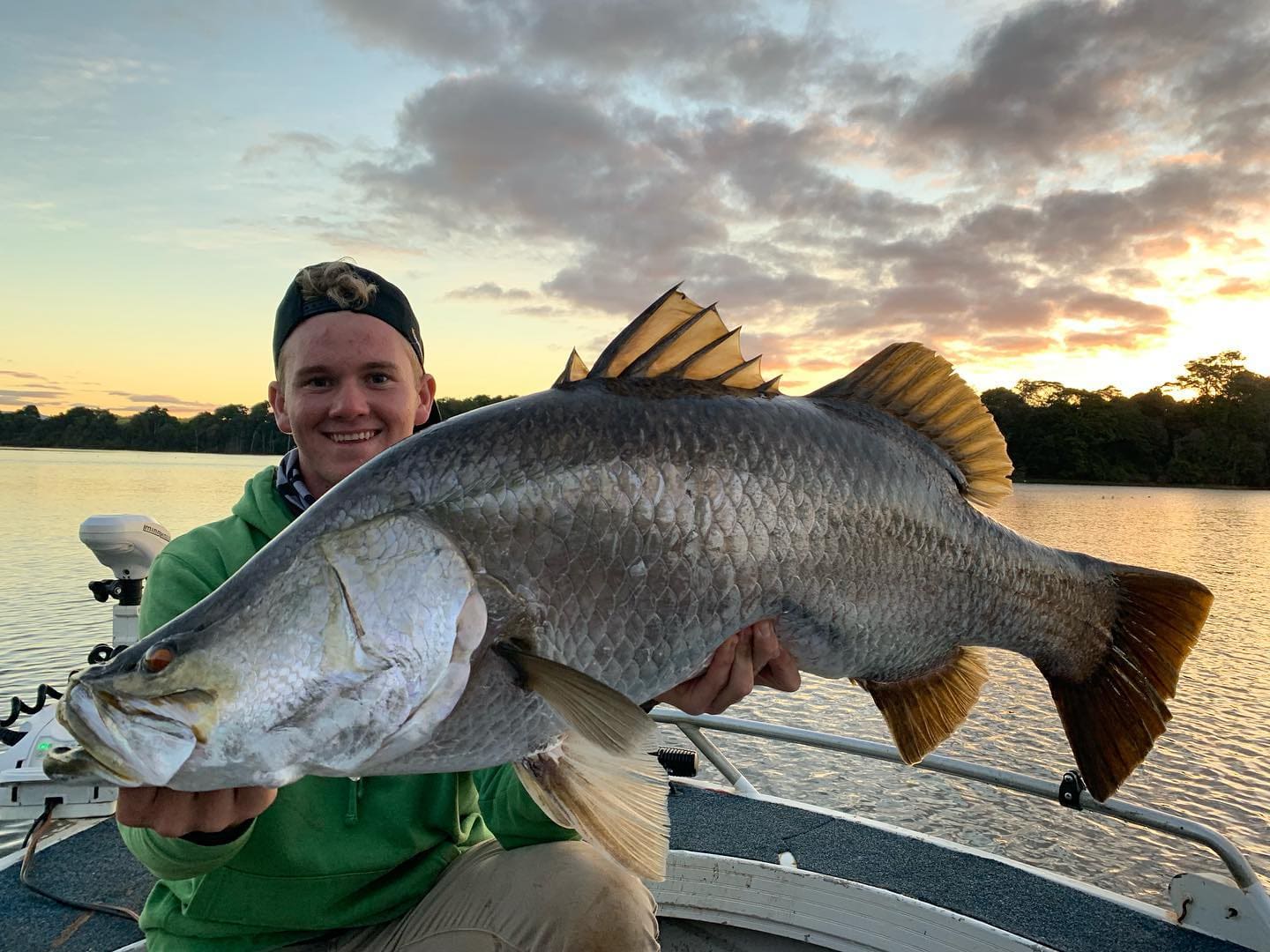
11. Are Sharks affecting your catch rates?
A. There’s a massive shark depredation problem, created by environmentalist groups imposing it on our weak government. This is why it has emerged. These groups categorize whaler sharks along with whites, makos, threshers, hammerheads, and other endangered species like Tigers – some of which are genuinely endangered. Yes, some of them are, and I have no issue with protecting them extensively. However, placing whalers in the same category is a mistake; they are the cockroaches of the ocean. Now, we face a significant issue, and it will worsen when gill netting is discontinued. While recreational anglers may advocate against Barra nets on the East Coast, these nets take out a heap of juvinile whalers. I believe their removal will leading to a potential surge in the shark problem. That’s the concern. I am curious about the other five proposed measures for the Great Barrier Reef. The first was 1/3 green zones, which has been implemented. The second was the removal of gillnets, and now that’s in effect. The third was fish harvest strategies, starting with mackerel and moving on to Nannygai and other species. All of these measures are influenced by UNESCO.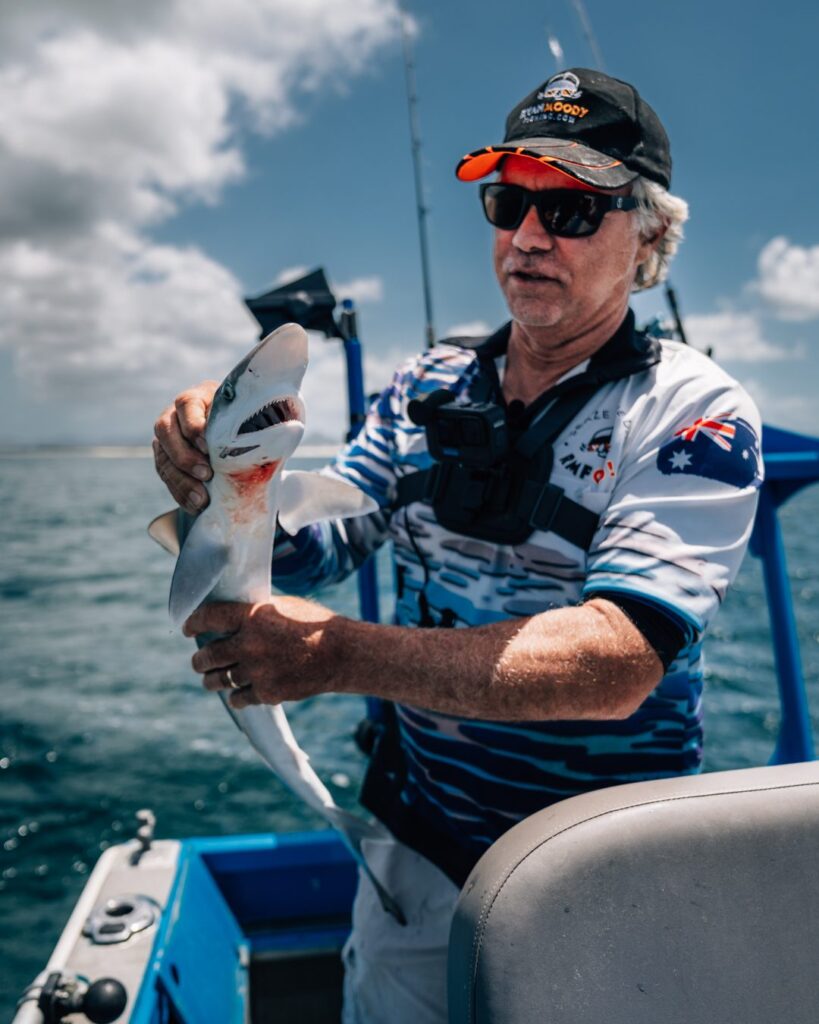
12. What are fishing opportunities for beginners on Magnetic Island?
A. If you’re restricted to land-based options, consider rocky headlands that you can walk to and cast Poppers. This is especially effective if you can observe a current line bouncing off the headland. Some jetties in certain land-based areas, like Picnic Bay Jetty, used to harbor a whole heap of Herring underneath, making it a worthwhile starting point. Mackerel catches were common in that area. Explore general fringing reefs off the headlands if you have access to a boat. Simply cast around the deeper headlands and fish where the coral rocks meet the mud or sand. Finding Fingermark course can be helpful. There are numerous scenarios applicable to both the island and its surrounding areas, covered in Sounder Skills 2. Additionally, you may find some areas to obtain good live baits. Given the challenging fishing history of some islands, using live baits over lures can often be more beneficial. There are plenty of promising spots around the islands, especially near White Rock, where good little headlands can be found. It’s a matter of locating features with the sounder and other tools like detachments.FULL VIDEO: FISHING TIPS AND TECHNIQUES Q AND A WITH RYAN
Breakdown and Key Sections
Jump to the bits you’re most interested in…
Time Stamps:
00:00:00 – 10th Anniversary & Online Courses
00:11:59 – Nanny Bag Limits Concerns
00:16:43 – Mackerel Fishing Tips
00:17:55 – Viewer New Year Fishing Resolutions and Q&A
00:21:48 – Course duration and flexibility
00:24:07 – Bohle River for fishing
00:27:07 – Lure tips for fishing near lily pads
00:29:37 – Preventing hooks from spinning
00:32:10 – Positive review of Garmin Kraken motor
00:37:09 – Surface lure recommendations for Barra fishing
00:39:27 – Viewer request for witty comebacks
00:40:50 – Critique of government and conservation groups
00:42:15 – Great Barrier Reef world heritage listing challenges
00:42:57 – Coral recovery after bleaching events
00:43:10 – Impact of freshwater on coral reefs and natural recovery
00:44:42 – Coral health monitoring in 2024
01:04:17 – Fishing courses and feedback
01:05:57 – Macro closure and bag limits discussion
01:07:22 – Back issues and personal updates
01:13:08 – Electric motors and equipment recommendations
01:10:37 – Water release from dams and its impact
01:19:10 – Barra fishing tips for specific locations
01:23:01 – Fishing in Lake Tinaroo
01:25:49 – Empowerment section discount
01:26:01 – Tides, moon, and animal triggers
01:26:43 – Travel plans and boat sale
01:27:58 – Shark depredation issues
01:29:06 – Boat sale
01:30:20 – Barra population off Cairns
01:31:42 – Difficulties fishing with sharks
01:37:14 – Crabbing course plans
01:37:56 – Understanding charts on sounders
01:40:11 – Memorable lure cast
01:42:11 – Favourite fishing spots
01:43:09 – Barra fishing plans
01:45:03 – Beginner tips for Maggie Island
01:45:57 – Barra fishing in Rockhampton
01:46:14 – Barra fishing in Rocky
01:47:10 – Barra Basics cost and reviews
01:47:38 – Discussion on TV shows
01:48:34 – Number of boats owned
01:49:30 – Announcement of upcoming live shows
01:50:09 – 10th Birthday Sale details
01:50:50 – Course effectiveness vs. YouTube
01:51:29 – Advice for course success
01:51:56 – Closing remarks


